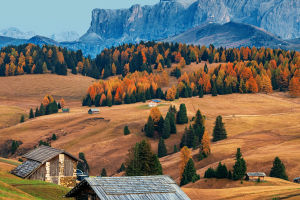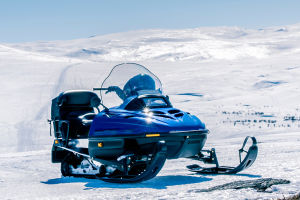Hey, Lykkers! Ever wondered about a dapper bird that calls the windswept coasts of South America home, dancing between land and sea with the grace of a seasoned traveler?
Meet the Magellanic Penguin—a quirky, resilient, and utterly captivating creature.
Dive into a world of migration, family drama, and some unexpected surprises that make these penguins the true stars of the Southern Hemisphere.
A Tale of Epic Journeys
The Magellanic Penguin is a master of migration, traveling thousands of miles each year. Found mainly along the coasts of Argentina, Chile, and the Falkland Islands, these penguins move between breeding and feeding grounds with astonishing precision. When the breeding season begins in September, places like Argentina's Punta Tombo burst into life, with over half a million penguins returning to nest.
Picture this: the coastline swarming with waddling penguins, their distinct braying calls filling the air. It's a scene straight out of a wildlife documentary, as the birds shuffle, squabble, and occasionally stumble around in their adorable tuxedoed glory.
Did you know that Magellanic Penguins have a built-in GPS? Well, not literally, but they possess an uncanny ability to navigate across the vast ocean, finding their way back to the exact nesting site year after year. Scientists believe these birds use a combination of Earth's magnetic field and the stars to guide them—a mystery that keeps researchers intrigued.
A Penguin Love Story
Magellanic Penguins are the definition of devoted partners. They're known to form monogamous bonds, reuniting with the same mate each breeding season. Talk about relationship goals! Males arrive early to claim their burrows, which they dig in sandy soil or under coastal vegetation, and eagerly await their partners. The reunion is heartwarming, often marked by a series of excited calls and affectionate preening rituals.
Once eggs are laid, the drama intensifies. Both parents share the duty of incubating the eggs, taking turns guarding them from predators like foxes and gulls. When the chicks hatch, chaos reigns supreme, as hungry, fluffy chicks beg for food. Parents make endless trips to the ocean, returning with bellies full of fish, which they regurgitate to feed their young. It's a messy but endearing sight, highlighting the penguins' fierce dedication to family.
The Largest Magellanic Penguin Colony in the world
Video by Swoop Adventures
Masters of the Deep
Though clumsy on land, Magellanic Penguins are ocean acrobats. With their streamlined bodies and flipper-like wings, they transform into agile hunters underwater. Swimming at speeds of up to 15 miles per hour, these penguins expertly dodge predators and chase down meals. Dives can reach depths of 200 feet, as they hunt for their favorite fish, squid, and krill.
Ever seen a penguin porpoising? It's when they leap in and out of the water like dolphins—an efficient way to travel long distances and avoid predators. The ocean is a playground and a battlefield, where agility and speed determine survival. Watching a group of penguins glide effortlessly through the water, twisting and turning like synchronized swimmers, is pure magic.
Unique Penguin Personalities
Magellanic Penguins are full of surprises. Their black-and-white plumage is not just for show—it serves as camouflage. The white belly blends with the bright ocean surface when seen from below, while the dark back merges with the deep waters when viewed from above. It's nature's perfect disguise, keeping them safe from hungry seals and orcas.
Communication among these penguins is also fascinating. Their braying calls (yes, like donkeys!) help them recognize their mates and chicks in the chaos of a busy colony. And if that wasn't cute enough, some penguins can be seen playfully chasing each other or curiously inspecting human visitors, adding an element of humor to their behavior.
Challenges and Conservation
Despite their playful and adaptable nature, Magellanic Penguins face serious threats. Climate change has altered ocean currents, impacting the availability of fish and forcing them to travel further for food. Oil spills continue to be a significant hazard, polluting the waters they rely on. Additionally, human development near nesting sites increases the risk of habitat destruction.
Conservation efforts are underway, with organizations working to protect vital breeding grounds and promote sustainable fishing practices. Marine reserves and education programs aim to ensure that these charismatic seabirds continue to enchant future generations.
Fun Penguin Trivia
Long-Distance Travelers: Some Magellanic Penguins migrate up to 2,400 miles each year, making them true marathoners of the bird world.
Burrow Architects: These penguins dig elaborate burrows to protect their eggs from predators and harsh weather. Burrows can be surprisingly deep and well-fortified!
Social Butterflies: Though they appear solitary in the ocean, on land, they're highly social, forming enormous colonies that can feel like a bustling seaside city.
A Final Waddle Away
The Magellanic Penguin embodies the resilience and charm of the natural world. From their epic migrations to their heartfelt family dynamics, these seabirds remind us of the wonders and struggles of wildlife. So, Lykkers, if the sound of crashing waves and the sight of waddling tuxedoed birds brings a smile, the world of the Magellanic Penguin is one worth exploring. Keep that spirit of curiosity alive, and who knows what enchanting creature will capture your imagination next?


